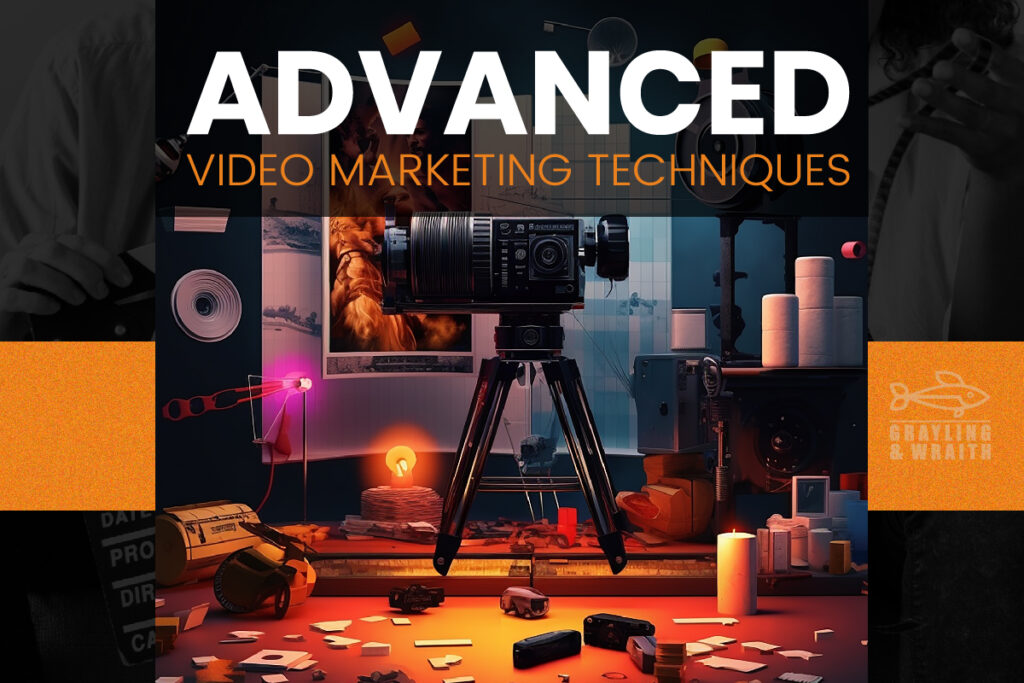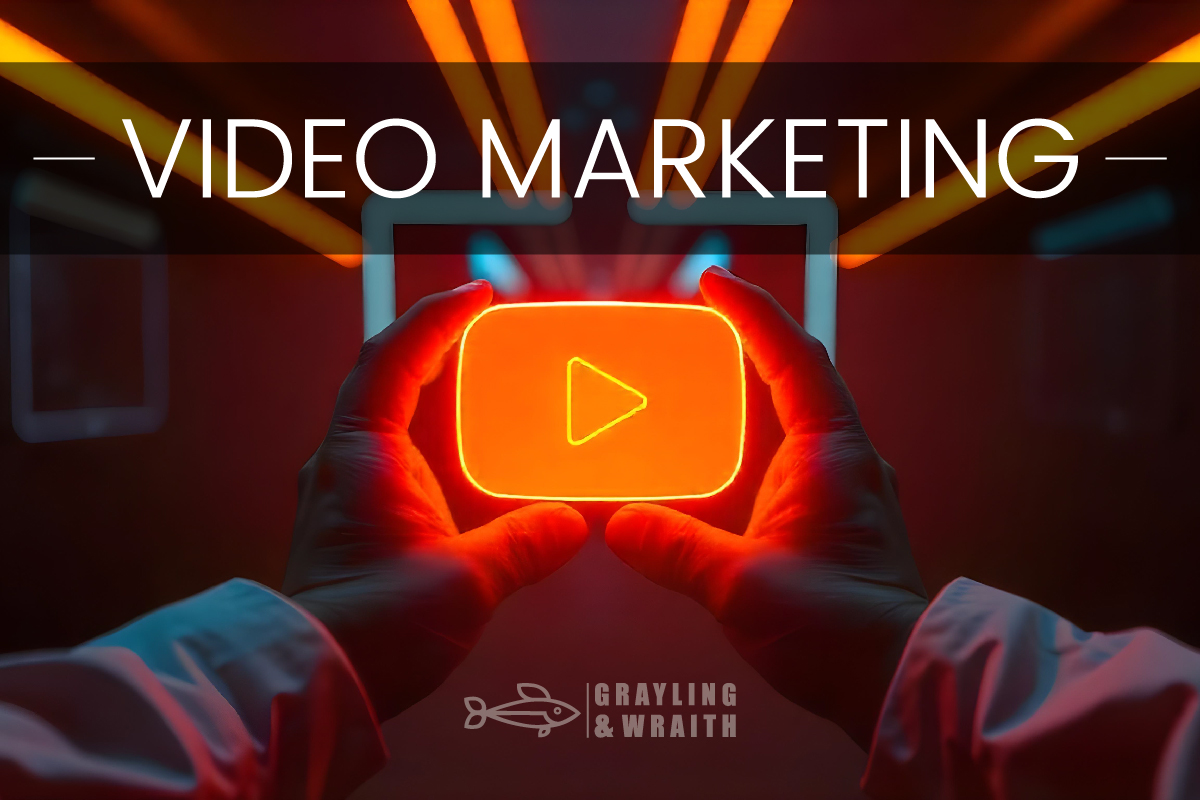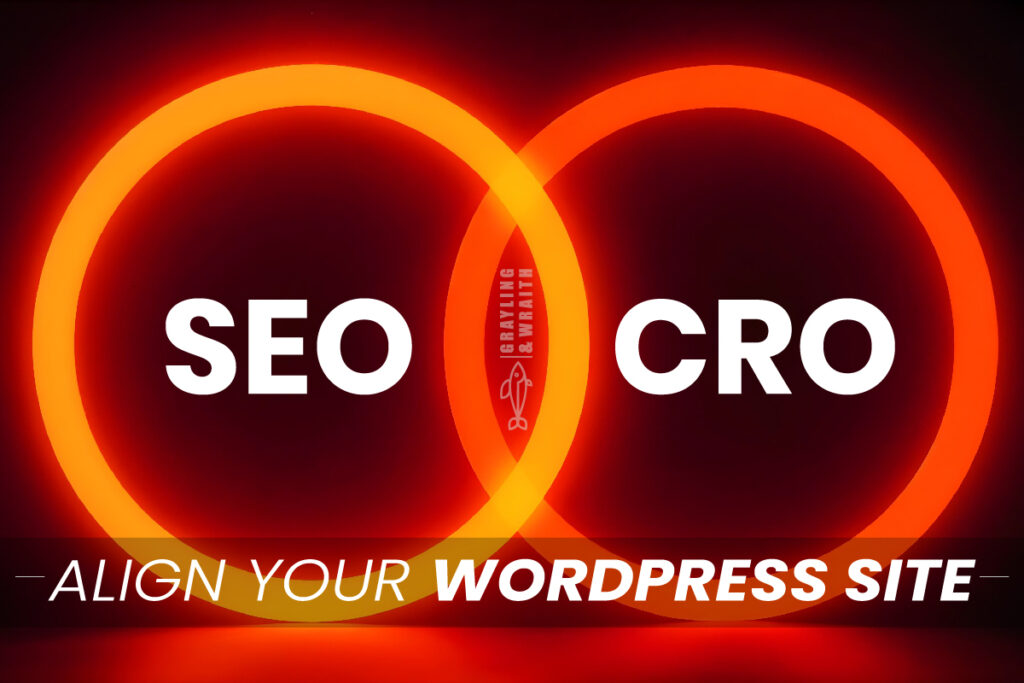Introduction to Video Marketing
Video marketing is one of the most powerful tools in a marketer’s arsenal. It involves using videos to promote products, services, or brands. The rise of platforms like YouTube, Instagram, and TikTok has made video marketing essential. As more consumers prefer video content over text, businesses must adapt. This article will explore advanced strategies to optimize your video marketing efforts, helping you stay ahead of the competition.
The Importance of Video Marketing
Video content can engage audiences more effectively than other media types. It captures attention quickly and conveys messages efficiently. Studies show that video content significantly increases conversion rates, with some businesses seeing a boost of up to 80% after implementing video marketing strategies. According to a report by Wyzowl, 87% of video marketers report that video gives them a positive ROI. You can enhance brand awareness and engagement by incorporating video into your marketing strategy.
Evolution of Video Marketing
The concept of using video for marketing is not new. However, its evolution over the years has been remarkable. In the past, video marketing was limited to TV commercials and high-budget productions. Today, even small businesses can create impactful videos with minimal resources, thanks to advancements in technology and platforms. This democratization of video production has changed the marketing landscape forever, making it accessible to businesses of all sizes. The HubSpot Blog provides insights into how video marketing has evolved and why it remains a critical part of digital marketing strategies.
Creating a Video Marketing Strategy
A successful video marketing strategy requires careful planning. Understanding your audience, setting clear objectives, and choosing the right platforms are critical. Let’s delve into the steps for creating an effective video marketing strategy.
Identifying Your Target Audience
Before creating videos, you must know who you are targeting. Identifying your target audience helps tailor your content to their preferences. Consider factors like age, gender, location, and interests. Tools like Google Analytics and social media insights provide valuable data to refine your target audience.
Setting Clear Objectives
What do you want to achieve with your video marketing campaign? Setting clear objectives will guide your efforts. Common goals include increasing brand awareness, generating leads, or driving sales. Your objectives will determine the type of content you produce and the platforms you choose.
Choosing the Right Platforms
Not all video platforms are created equal. Each platform has its strengths and audience demographics. For instance, YouTube is ideal for long-form content, while Instagram and TikTok are perfect for short, engaging videos. Choose platforms that align with your target audience and campaign goals. Consider integrating videos into your website and email marketing for broader reach. For more detailed information on selecting the right video platform, check out this guide from Sprout Social.
Types of Video Marketing Content
There are various types of video content you can create. Each type serves a different purpose and appeals to different audiences. Understanding these types will help you diversify your content and reach a broader audience.
Enhancing Your Video Marketing Strategy with Professional Production
Creating a successful video marketing strategy is not just about understanding your audience or choosing the right platforms; it’s also about the quality of the videos you produce. High-quality production can significantly enhance the effectiveness of your video marketing efforts. According to Grayling & Wraith’s insights on making a memorable impression with marketing video production, professional video production ensures that your brand communicates clearly and resonates with your target audience. High production values not only capture viewers’ attention but also convey a sense of professionalism and credibility, which are crucial in building trust with your audience. By investing in quality video production, you can elevate your video marketing from basic to outstanding, setting your brand apart from the competition.
Explainer Videos
Explainer videos are short videos that explain a product, service, or concept. They are educational and often use animations to simplify complex topics. These videos are perfect for introducing new products or explaining how something works, and they are proven to improve understanding and retention rates among viewers. According to TechSmith, explainer videos can increase conversion rates by up to 20%.
Product Demos and Tutorials
Product demos showcase your product’s features and benefits. Tutorials go a step further by teaching viewers how to use your product. Both types of videos are excellent for demonstrating value and encouraging conversions. Consider embedding these videos on product pages to enhance user experience and provide additional value.
Brand Storytelling
Storytelling is a powerful way to connect with your audience emotionally. Brand storytelling videos share your brand’s history, mission, and values. These videos build trust and loyalty by showing the human side of your business. They are particularly effective on social media platforms where users seek authentic and relatable content.
Customer Testimonials
Customer testimonials are effective in building credibility. They feature satisfied customers sharing their positive experiences with your product or service. These videos act as social proof, encouraging potential customers to make a purchase. Video testimonials are more persuasive than text-based testimonials because they show real people expressing genuine emotions. For insights into creating effective customer testimonial videos, refer to this Forbes article.

Production Tips for Effective Video Marketing
Creating high-quality videos requires a combination of creativity and technical skills. While you don’t need a Hollywood budget, certain production elements are crucial. Let’s explore some tips for producing effective video content.
Planning Your Video
Every successful video starts with a solid plan. Outline your video’s purpose, message, and target audience. Create a storyboard to visualize your ideas. Planning helps keep the production process organized and efficient, ensuring that your video meets its objectives.
Script Writing
A well-written script is the backbone of any good video. It should be clear, concise, and engaging. Avoid jargon and keep sentences short. The script should guide the viewer smoothly from one point to another, maintaining their interest throughout the video.
Choosing the Right Equipment
The quality of your video depends on the equipment you use. While smartphones can produce decent videos, investing in a good camera and microphone is advisable. Lighting is also crucial; good lighting can make a huge difference in video quality. Remember, high-quality videos are more likely to be shared and liked, increasing your reach. For a beginner’s guide to video equipment, check out this resource from CreativeLive.
Filming and Editing
Once your plan and equipment are in place, it’s time to start filming. Pay attention to composition, angles, and background. After filming, editing brings your video to life. Use editing software to trim unnecessary parts, add music, and include text overlays. Editing tools like Adobe Premiere Pro and Final Cut Pro offer advanced features for professional-quality videos.
Adding Graphics and Animations
Graphics and animations can enhance your video’s appeal. Use them to emphasize key points or explain complex ideas. However, don’t overuse them; too many graphics can distract from the main message. Consider using animated logos or branded elements to reinforce your brand identity.
Music and Sound Effects
Music sets the tone for your video and can evoke emotions. Choose music that matches your video’s theme and message. Sound effects can add a professional touch, but they should be used sparingly. Ensure you have the necessary rights to use any music or sound effects to avoid copyright issues. For royalty-free music, sites like AudioJungle offer a wide selection of tracks.
Optimizing Your Videos for Search
Creating great videos is only half the battle. You also need to ensure they are discoverable. Optimizing your videos for search is crucial for increasing visibility and reach. Here are some SEO tips for video marketing.
Using Keywords Effectively
Keywords are the foundation of SEO. Research keywords that are relevant to your video content. Use these keywords in your video title, description, and tags. However, avoid keyword stuffing; it should feel natural and relevant. Tools like Google Keyword Planner can help identify valuable keywords.
Titles and Descriptions
Your video’s title is the first thing viewers see. Make it compelling and include your primary keyword. Descriptions provide more context and should also include keywords. A well-written description can improve your video’s search ranking. Include a call-to-action in the description to encourage viewers to engage with your content.
Tags and Categories
Tags help categorize your video and improve searchability. Use a mix of broad and specific tags related to your content. Assigning your video to the appropriate category will also help it reach the right audience. Use tools like VidIQ or TubeBuddy to optimize your tags.
Creating Engaging Thumbnails
Thumbnails are the visual representation of your video. A compelling thumbnail can significantly increase click-through rates. Use high-quality images and include text overlays to convey the video’s topic. Ensure that your thumbnail accurately represents the content. A/B testing different thumbnails can help identify which ones attract more clicks.

Leveraging Social Media for Video Marketing
Social media platforms are perfect for video marketing. They allow you to reach a large audience quickly. Let’s explore how to leverage social media to amplify your video marketing efforts.
Sharing Videos on Social Media Platforms
Sharing your videos on social media can increase their reach and engagement. Platforms like Facebook, Instagram, and LinkedIn are ideal for sharing videos. Customize your video format and length to suit each platform’s requirements. Use hashtags, captions, and descriptions to optimize your video for social media algorithms. This Hootsuite guide offers tips on optimizing videos for different social media platforms.
Engaging with Your Audience
Engagement is key to successful social media marketing. Respond to comments and messages promptly. Encourage viewers to like, share, and comment on your videos. Engaging with your audience builds a community around your brand. Hosting live sessions or Q&A sessions can also increase engagement.
Using Hashtags and Mentions
Hashtags and mentions can increase the visibility of your videos. Use relevant hashtags to categorize your content and reach a broader audience. Mention influencers or partners to extend your reach further. Research trending hashtags to capitalize on current conversations.
Collaborating with Influencers
Influencer marketing can boost your video’s reach and credibility. Collaborate with influencers who align with your brand values. They can promote your videos to their followers, expanding your audience base. Influencers can also provide unique content perspectives, adding value to your videos.
Choosing the Right Influencers
Not all influencers are a good fit for your brand. Choose influencers whose audience matches your target market. Consider their engagement rates and the quality of their content before collaborating. Tools like Upfluence and HypeAuditor can help identify suitable influencers.
Creating Authentic Content
Authenticity is crucial in influencer marketing. Encourage influencers to create content that feels genuine and aligns with their style. Authentic content resonates more with viewers and builds trust. Work with influencers to develop content ideas that reflect your brand’s values.

Measuring the Success of Your Video Marketing Campaign
To improve your video marketing efforts, you need to measure their success. Tracking key performance indicators (KPIs) helps you understand what works and what doesn’t. Let’s discuss how to measure the success of your video marketing campaign.
Key Performance Indicators (KPIs)
KPIs provide insights into your video’s performance. Common KPIs include views, engagement, conversion rates, and retention rates. Monitoring these metrics helps you identify areas for improvement. Set specific, measurable goals to track your progress effectively. For more on setting KPIs, you can refer to resources like the Vidyard Blog, which offers insights into video marketing metrics and KPIs.
Views and Impressions
Views indicate how many times your video has been watched. Impressions show how often your video has been seen, even if not watched. Both metrics give an idea of your video’s reach. High views and impressions suggest good visibility and interest in your content.
Engagement Rates
Engagement rates measure how viewers interact with your video. Likes, comments, shares, and click-through rates are all indicators of engagement. High engagement rates suggest that your content resonates with viewers. Use engagement metrics to gauge audience interest and refine your content.
Analyzing Video Retention
Retention rates indicate how long viewers watch your video. A high retention rate means that viewers are finding your content valuable. Analyzing retention can help you identify which parts of your video are most engaging. Use this data to create more engaging content and reduce drop-off rates.
Using Analytics Tools
Analytics tools provide detailed insights into your video’s performance. Platforms like YouTube Studio offer built-in analytics. These tools show metrics like audience demographics, traffic sources, and watch time. Use these insights to understand your audience better and tailor your content accordingly.
Adjusting Your Strategy
Based on your analytics, you may need to adjust your video marketing strategy. If certain videos perform well, consider creating similar content. If some videos have low retention rates, analyze why viewers are dropping off. Continuously optimize your content based on feedback and performance metrics.

Advanced Video Marketing Techniques
To stay ahead in the competitive market, you need to use advanced video marketing techniques. These techniques can give you a competitive edge and drive better results. Let’s explore some advanced strategies for video marketing.
Live Streaming
Live streaming allows you to connect with your audience in real-time. It creates a sense of urgency and exclusivity. Use live streams for product launches, Q&A sessions, or behind-the-scenes content. Platforms like Instagram Live, Facebook Live, and YouTube Live offer easy ways to connect with your audience.
Benefits of Live Streaming
Live streaming encourages immediate engagement. Viewers can ask questions and receive instant responses. It also gives a more authentic and unedited view of your brand, building trust. Live streams can be recorded and repurposed for future content, maximizing their value.
Best Practices for Live Streaming
Promote your live stream in advance to build anticipation. Ensure you have a stable internet connection to avoid interruptions. Interact with viewers during the stream to make them feel involved. Use engaging visuals and clear audio to maintain viewer interest.
Interactive Videos
Interactive videos engage viewers by allowing them to interact with the content. Features like clickable links, polls, and quizzes enhance viewer engagement. Interactive videos can increase retention rates and drive conversions. They provide a more immersive and personalized experience for viewers.
Creating Interactive Content
Use interactive elements to guide viewers through your content. For example, clickable links can lead to product pages or additional information. Quizzes can test viewers’ knowledge and keep them engaged. Interactive videos can be used for educational purposes, product demonstrations, or storytelling. For more on interactive video creation, see this guide from HubSpot.
Tools for Interactive Videos
Several tools make creating interactive videos easy. Platforms like Wistia and Vidyard offer features for adding interactive elements. These tools can help you create engaging and interactive video content. Experiment with different interactive features to see what resonates with your audience.

The Future of Video Marketing
Video marketing continues to evolve with new technologies and trends. Staying updated with these changes is essential for success. Let’s explore the future trends in video marketing.
The Rise of Augmented Reality (AR) and Virtual Reality (VR)
AR and VR are transforming the way consumers experience video content. These technologies provide immersive experiences that traditional videos cannot. Brands are using AR and VR to create interactive and engaging video content. As these technologies become more accessible, their use in marketing will grow. For a detailed look at AR and VR trends in marketing, check out this Statista report.
Applications of AR and VR in Marketing
AR and VR can be used for virtual product demonstrations, immersive storytelling, and interactive experiences. They allow consumers to experience products or services in a virtual environment. These technologies can enhance customer engagement and satisfaction. For example, AR can be used for virtual try-ons in the fashion industry.
Challenges and Opportunities
While AR and VR offer exciting opportunities, they also come with challenges. High production costs and technical requirements can be barriers. However, as technology advances, these barriers are likely to decrease. Brands that invest in AR and VR now will be ahead of the curve as these technologies become mainstream.
Personalized Video Content
Personalization is a growing trend in marketing. Personalized videos deliver tailored content to individual viewers based on their preferences. This approach increases relevance and engagement. Personalization can be achieved through data analytics, customer segmentation, and dynamic content creation.
Implementing Personalization
Use data and analytics to understand your audience’s preferences. Create videos that cater to different segments of your audience. Personalized videos can be used for email marketing, product recommendations, and customer support. The more relevant your content, the more likely it is to engage viewers. This Forbes article provides insights into effective personalized video strategies.
Benefits of Personalization
Personalized videos create a more engaging and relevant experience for viewers. They can increase customer satisfaction and loyalty. Personalized content is more likely to be shared, increasing your video’s reach. Use personalization to build stronger relationships with your audience and enhance your brand’s reputation.
Conclusion: Mastering Video Marketing
Video marketing is a powerful tool that can significantly impact your brand’s success. By understanding your audience, creating diverse content, and using advanced techniques, you can master video marketing. Stay updated with the latest trends and continuously optimize your strategy. With the right approach, video marketing can take your brand to new heights.
Video marketing is more than just a trend; it’s a vital part of any modern marketing strategy. As technology evolves, so will the ways we use video to connect with audiences. Embrace the power of video marketing and watch your brand grow.

















